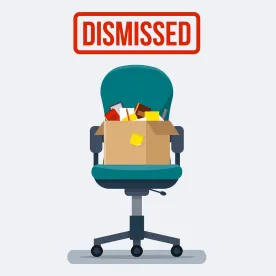Redundancy. The word is enough to take the bounce out of anyone’s stride. For a business, it means undergoing a complicated process of selection, consultation, getting over all the practical hurdles that may pop up along the way and all the while somewhere at the back of your mind sits the uncomfortable prospect of a Tribunal claim landing on your desk. As lawyers, it’s our job to help prepare employers and advise on how best to tackle situations as and when they arise. But what about the human element? It goes without saying that experiencing redundancy as an employee is far worse and much more personal than it is for a business, but there are also the managers, HR advisors and other individuals involved to consider, and it’s no walk in the park for them either. We can advise on what to do when an ‘at risk’ employee goes on sick leave just in time to miss their first consultation, but we can’t do much to make it any less traumatic to tell a colleague and friend that they are losing their job.
Today I got a taste of what it feels like to be made redundant, playing the role of employee in some client training, being first put at risk and then, after the tea-break, given notice. Even in a totally safe practice environment none of the client’s staff volunteered to sack me, though that may in part have been down to my maternal stroking of the cushion up my jumper. Eventually one was picked on to do the deed, the stress etched across his face.
It seemed clear that the more difficult meeting for the managers was actually the at risk one, since it is there that the main blow is delivered. I do not know what proportion of employees who are formally put at risk are not then made redundant but I suspect it is very small. The tendency to hear the word “redundancy” at that meeting and not the bit about subject to consultation and no final decision having been made is therefore fully understandable.
Then came the final meeting and finding out I was indeed being made redundant. I had no difficulty in performing this part of the role. As I sat opposite my ‘manager’ and listened to the opening lines, I could tell it was going to be bad news. I definitely felt reality hit then, and the mock tears came as if I really was losing my job. Even though I was just playing the part, all the real panic you would imagine came flooding to mind. How I would pay my rent? How I would support myself? How would I find another job? Was I going to be escorted from the building? I could sense that everyone in room was finding this just as difficult to observe as I was to experience. It was horrible. I found that the manager’s offer of a glass of water actually really helped – it was a human and considerate gesture. It also helped that my manager looked genuinely sorry to be telling me that I was losing my job. We focus on following process, trying to get every stage right and avoiding potential litigation (which are of course extremely important considerations) but, as a briefly redundant employee, it was the little human gestures that had the biggest impact. In this case, positively, but the reverse would also be true, with even the smallest sign of impatience or lack of interest on the part of the dismissing manager greatly magnified in the perception of the employee.
At the end of the day, this was a valuable reminder not to lose sight of the real people who sit on both sides of the table when it comes to any employment issue. Legal process is important, but so are the people involved. With that in mind, a few pointers for those involved in a redundancy process on the business side of things:
-
It is more than ok to be nervous about conducting redundancy meetings. It is natural not to relish the process of making an individual redundant. The Acas Redundancy Guide even suggests that employers requiring managers to do this should offer them a mentor or counselling to lessen their anxiety afterwards.
-
You do not need to be 100% perfect. The law asks that you are reasonable, not perfect, so don’t fret that getting one word out of place will result in instant litigation.
-
Know your facts – if you don’t understand the detailed thinking behind the redundancy proposal (how it has come to pass and how things are intended to work afterwards), you will never be able to explain it convincingly to the employee.
-
Do not be a robot, sticking to the script at all costs. If somebody brings something up, pay attention and make a note of it to look into further. If you have to pause the process, do. Not only is it an important part of consultation to listen with your full attention and act on the ideas and information given by an employee, but it will show that you do care at some level about the employee you are consulting with, which can make all the difference.
-
Do acknowledge that this is a difficult process and there are many very human emotions that you will inevitably face. You do not need to be made of stone to undertake the process properly, and sometimes offering a moment or a tissue or a glass of water makes all the difference. It is often said that by definition, redundancy isn’t personal. But it is, both for the employee and the manager, and there is neither point nor benefit in pretending otherwise.
Hannah Field authored this post



 />i
/>i

